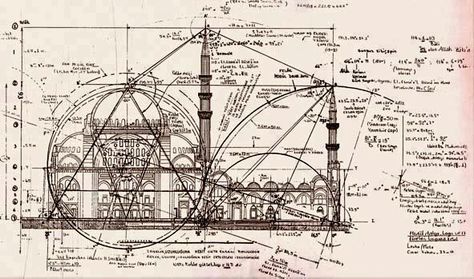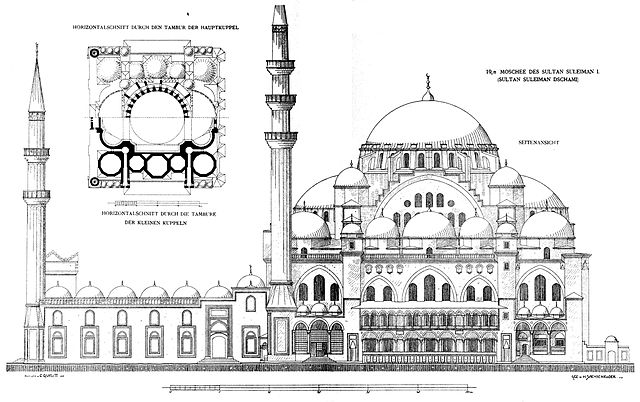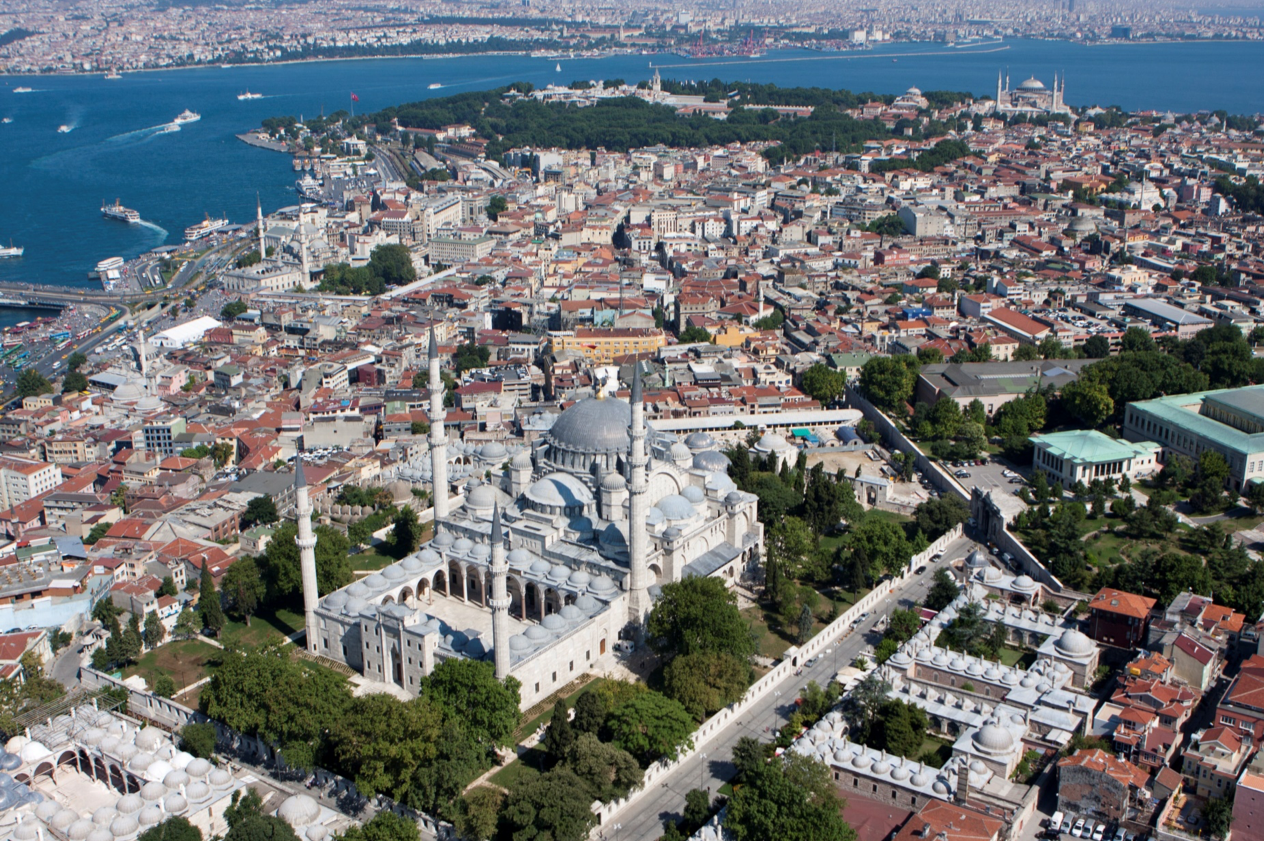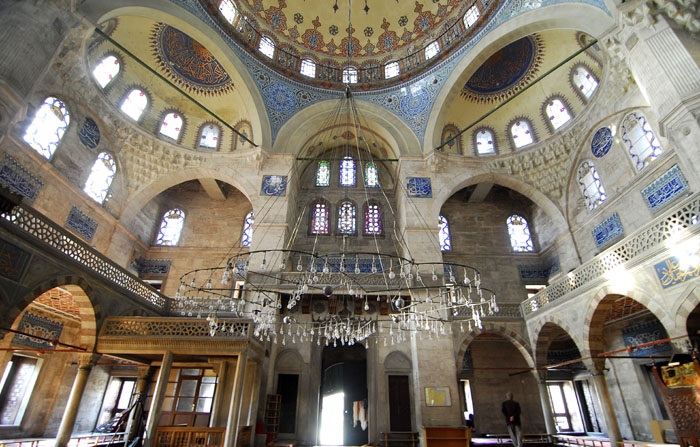


Sinan is considered the greatest architect of the Ottoman Empire’s architectural heritage. It is generally assumed that Sinan was born in the year 1490 and that he spent his youth in the village of Agirnas near Kayseri until conscription (devsirme) to the ‘masters of carpenters’.
Early Life
At age 22, Sinan was recruited into the Corps of Ottoman Standing Troops (Janissary). During this military tour he travelled widely throughout the empire, as far as Baghdad, Damascus, Persia and Egypt. In his own words he informs us about his observations:
“I saw the monuments, the great ancient remains. From every ruin I learned, from every building I absorbed something.”
By mid-life Sinan acquired a reputation as a valued military engineer and was brought to the attention of Sultan Suleyman (1520-66) who in 1537 appointed Sinan (aged fifty) as head of the office of royal architects. The sultan, upon the death of his favorite son Prince Mehmet, ordered Sinan to design and construct a royal mosque. Challenged by the works of his predecessors and the majesty of Hagia Sophia, Sinan creates the Sehzade Mosque, one of his first masterpieces, considered one of the most remarkable of buildings to this day.



Building a Masterpiece
Due to Sinan’s rising reputation, a flood of royal as well as individual clients produced an unprecedented building boom that changed the Istanbul landscape to what today the Turks and people from all over the world consider the hallmark of this great city’s image. Under Sultan Suleyman, Sinan was elevated to the position of State Architect, which he held for a decade.
The legendary stature of Suleyman is realized today in what is commonly called the “crown on the hill”. Dominating the Bosphorus and the Golden Horn, the silhouette of the Suleymaniye, with its slender minarets and lofty dome, is one of the defining features of Istanbul. Almost 10 years in the making, Sinan was the master planner, designer and builder of the “Suleymaniye Kulliye” (a complex of charitable buildings) commissioned by the Sultan on a site overlooking the Golden Horn and Pera. The Kulliye covers almost 25 acres and includes in addition to the large mosque (basilica plan), four schools (medreses), a hospice, public baths (hamam), a hospital & dispensary, bookshops, a library, the Sultans’ tomb (turbe) and the worlds first teaching asylum (bimarhane).
Urban Gems
One of the truly unique urban Mosques and charitable building projects was commissioned by the Grand Vizier and called after his name, the Sokollu Mehmet Pasha Mosque Complex (1571-72) in the Kadirga Liman quarter, location of the former gate (Kumkapi), which protected the harbor. The approach to this neighborhood complex is through descending narrow crooked lanes. The irregular site drops over 56 feet and presents a serious urban planning challenge. Sinan’s indigenous talent for taking advantage of the lay of the land is evident from the respect for scale and the ingenuity and delightful changes in views one experiences accessing any one of the number of entries to this complex.

During the construction of the Sokollu Sinan received a great deal of pressure from Sultan Selim II, son and successor to Sultan Suleyman, to progress what is to be Sinan’s monumental masterpiece, The Selimiye Complex in Edirne (1568-74). As described …”tall minarets announce the city of Edirne from its endless landscape and from as far as the eye can see. The mosque dominates and crowns the highest elevation, looking down on a city articulated by domes and minarets of other massive buildings.”
It is said that in Istanbul monuments grow from the city but the Selimiye grows from the land. The dome is of the same diameter as Hagia Sophia but is higher. The pencil-shaped minarets, grooved to express verticality, are some of the tallest ever built (230 feet from ground to finial). Sinan used these minarets as buttressing piers. The mosque plan, like the Sehzade Mosque, comprises two equal parts, one open (the spacious court) and one covered (the mosque). “The superb quality of the exterior does not adequately prepare one for the breathtaking spaciousness and sheer poetry of space and light within”. Edirne has suffered through many earthquakes but none have harmed this monument. Sinan’s crowning glory is summed up in this project through its graceful synthesis of the exterior with and ideal spatial interior.
An Eternal Legacy
The few prominent projects presented here represent only a small part of this great architect’s voluminous design and construction accomplishments throughout the Empire. It is believed that Sinan’s total works encompass over 360 structures which included 84 major mosques, 51 small mosques (mescit), 57 religious schools (medreses), 7 seminaries, 22 mausoleums (turbe) 17 care facility, 3 asylums, 7 aqueducts, 46 inns, 35 palaces and mansions and 42 public baths.
Sinan died in 1588 and was buried in a modest tomb, which he designed for himself at the rear of his garden near the Suleymaniye Mosque in Istanbul.
